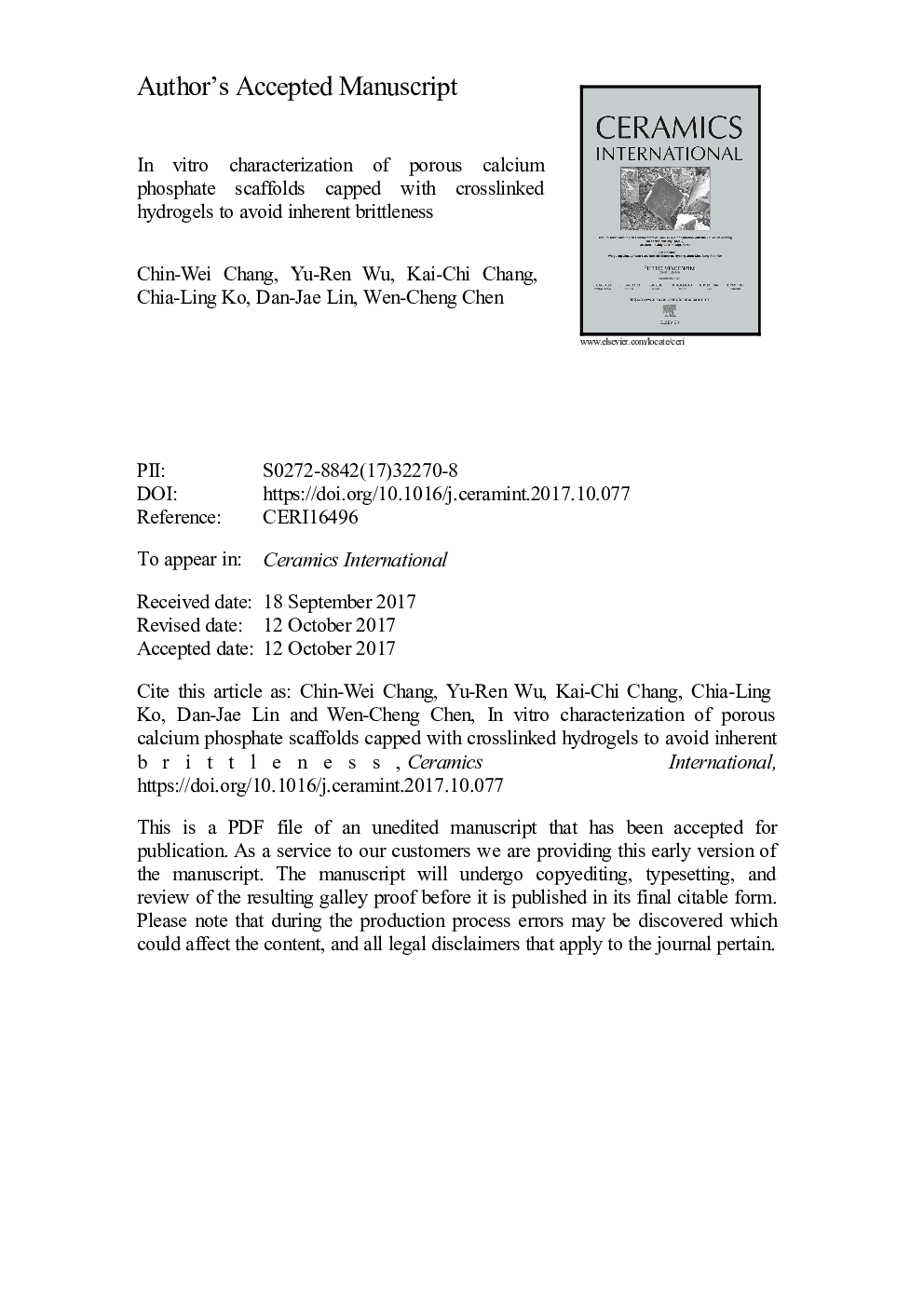| Article ID | Journal | Published Year | Pages | File Type |
|---|---|---|---|---|
| 7888868 | Ceramics International | 2018 | 33 Pages |
Abstract
Ductile composite scaffolds can avoid being crushed during filling processes in clinical applications. Thus, this study aimed to modify brittle porous ceramic scaffolds into ductile scaffolds through hydrogel capping. The surfaces of calcium phosphate (CaP) ceramic scaffolds were effectively capped with alginate/gelatin hydrogels. The composite scaffolds were then crosslinked, subjected to vacuum drainage, and washed prior to lyophilization. The detailed controlled approach in this study was proposed with the aim to develop biocompatible composites with anisotropic open pores through the formation of a thin, homogenous, hydrogel film coating on porous ceramic scaffold surfaces. The performances of the hydrogel/CaP composite scaffolds were evaluated on the basis of their morphological characteristics, compressive strengths, and cell viabilities. Results showed that strength, toughness, and specimen integrity after cracking are strongly related to the concentration of the hydrogel cap. Strength testing results showed that the use of 50Â vol% alcohol as the crosslinker removal solution yielded scaffolds with high toughness and ductility. Moreover, the cracked specimen dipped in 50Â vol% alcohol possessed better integrity than that dipped in water only. This study successfully identified the optimal hydrogel quantity for the fabrication of biocompatible scaffolds with open connective pores. The advantages of the fabricated scaffolds indicate the relevance of the proposed method to clinical applications, such the production of fillers for successful alveolar bone augmentation.
Related Topics
Physical Sciences and Engineering
Materials Science
Ceramics and Composites
Authors
Chin-Wei Chang, Yu-Ren Wu, Kai-Chi Chang, Chia-Ling Ko, Dan-Jae Lin, Wen-Cheng Chen,
